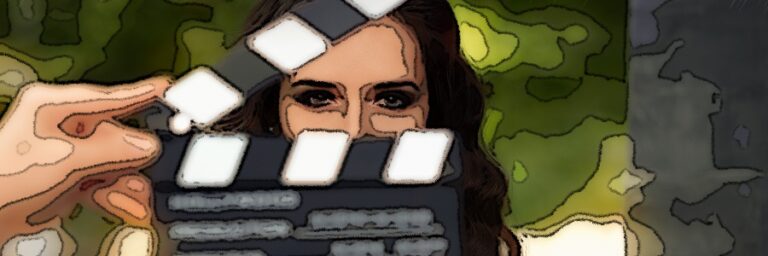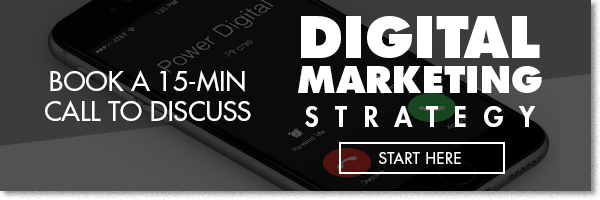YouTube Cards 101

Finally, Monday is over. You made a nice dinner with your loved one, or pet or life-sized pillow, and now you are curling up for a timely 10:30 PM bedtime. Pat yourself on the back. You are an adult, heading to bed early in preparation for the long professional workday ahead. You look at your bedside table and see a classic novel that deserves a re-read or a new thriller that has kept your attention for the first 28 pages. Then, inevitably, you look across the room to the blinking eye of your laptop.
You cave. You are an adult after all and can restrain yourself to a few you tube videos before bed. How about a few professional tutorials on how to make simple cocktails? That sounds harmless enough. Flash forward 3 and a half hours. You come to in the same place and position, but it is now almost 2 AM Tuesday morning. Your eyes are glassy and you wonder: How did I get here? Some sort of alien abduction picked you up at “Manly cocktails” and dropped you off at “Epic Scare Pranks Vol. 15”. You fell into the rabbit hole.
Related: YouTube SEO: How to Rank YouTube Videos
This phenomenon is just one example of the ways in which social media has come to dominate our entertainment, shopping, and social needs. According to a recent study, the average person will spend around 5 years of their lives on social media. This same study suggests that the average person spends around 40 minutes a day on YouTube – the highest average time of the most popular social media sites. While theories abound about how this is good, or bad or inconsequential, no one can deny that it is an opportunity to reach people.
What Are YouTube Cards?
Take for instance the YouTube card. The YouTube card is a call to action (CTA) tool that can appear at any point in your video and can include images, outside links, and even content that’s downloaded when viewers click. Cards can point viewers to a specific URL and display images, titles, and calls to action, depending on the card type. This sort of option is a major departure from traditional media. It offers the viewer unfettered access to related subjects even before their current subject has expired.
A tool like the YouTube card is successful because it offers people the freedom to choose their content, to be the master of their next move. For instance, a viewer watching a prank on YouTube might be interested in a tutorial on how to achieve that effect.
A grown man in bed might be interested in a link to a particular Dominican rum to pull off a stylish daiquiri at an upcoming house party. Or perhaps the worldlier among us would be interested in finding a way to donate or contribute to a charity featured in a documentary he or she is currently watching. All of these desires, the silly, the mundane and even the philanthropic, can be achieved by the use of YouTube cards.
What are the types of YouTube cards?
The possibilities of this tool for advertisers and non-profits are evidenced by the variety of cards available. There are five different varieties that are commonly used in the videos we watch from day to day. As you might expect, each one has a different visual structure and specific placement within each video.
Each one has a particular function or set of functions that are largely dependent upon these characteristics. By taking a look at the characteristics of each type we can gain an understanding of the uses for each one and ultimately decide which are best to employ for the purposes of different types of videos.
Merchandise and Advertisement:
YouTube has become a major hub of economic activity. For some, their content and the links to retail sites is the fundamental source of their income. The YouTube card can optimize this trade by providing well-timed links to professional landing pages or retail sites.
Related: Six Ways To Increase YouTube Traffic
As we will see with other card varieties, YouTube is particular regarding what URLs it allows to link from its videos, so you will have to register as one of YouTube’s officially recognized retailers, which you can do here.
Channel or Playlist Links:
If you want to increase the traffic or watch time for your channel, a YouTube card is the perfect tool. If a user is creative in his or her placement of a card, the viewer is far more likely to either link to the users channel or to continue along a playlist. This depends largely on the organization and the timing of the card. Cards can emerge at any time during the video, but are often presented in chronological order at the end of the video as an “endscreen”.
Therefore, if you are on episode 3 of a cooking show, the first “end screen shot” would logically be presented as episode 4 and so on. “Endscreens” are also highly popular because they do not distract or interrupt the flow of the video, a characteristic which has the potential to annoy some viewers.
Associated Website/ Link Cards:
This feature is more or less the same as the merchandise card however it is not limited to approved retailer landing pages. Therefore, it can be a link to an individual’s website or blog if that site is associated with YouTube. This feature is intended to invite the viewer to learn more about the creator’s content, interests or mission. If a person is creating popular YouTube content, this is a perfect way to draw this popularity back to the user’s own site.
Poll Cards:
People are increasingly willing to partake in the creative or decision-making process of the creator. Social media has created a generation of users who believe that their voices truly matter. For this reason, the YouTube card poll feature is ideal for testing the waters on a new product or idea.
Like the other cards, the poll feature can appear at any time during the video and will prompt the viewer to partake if they so choose.
Fundraising/ Fan Funding:
For the more altruistic or socially motivated among us, YouTube cards provide an excellent means for subscribers to connect to non- profits, charities or other organizations in need of support. Like merchandising, there is a
Once established, a user can easily link viewers to an approved campaign or fundraising site. Unless you have been hiding under a rock over the last two or three years it is exceedingly clear that social media is the venue of the future for political and non-profit organizations.
Like the fundraising feature, the fan funding feature is intended to help viewers donate money to their favorite YouTube creators. Again, an account must be in good standing and needs to have their account certified before they can apply a fan funding card to their content. Once established, subscribers can help their favorite creators keep the content coming.
Where do cards show up?
Cards are shown on the right side of a video on a desktop or below the video on mobile. If there are multiple cards on a video, viewers can scroll through them while the video is playing.
Why Use YouTube Cards?
If this sort of call to action technology sounds familiar, well, it should. In the year 2018, there is nothing novel about being prompted to click into related material from the source material. Indeed, YouTube has been employing the “Annotations Editor” since 2008. Think back to the distant annals of social media history, can you imagine a time when your material ended and you weren’t given a CTA to other related media? It seems unthinkable. Still, major advancements have been made to this technology since their conception way back in the Dark Ages.
Related: YouTube True View for Action
What has really changed since 2008? First and foremost, cell phone technology has exploded and with it the number of cell phone users who are almost constantly engaged in social media activity. This expansion of cell phone use has translated directly to YouTube, with the majority of users now accessing content from their cell phones. So how does this relate to YouTube Cards? Well prior to card technology, annotations could not be accessed via mobile users. Today with the use of YouTube card technology, an advertiser or channel operator can reach all users – but especially the growing number of mobile users.
While there are some restrictions, including the placement and color scheme of added YouTube cards, the practicality of the tool outweighs any aesthetic issues. Of course, that practical purpose is to reach the largest possible audience. According to Muli Salem, a Google product manager, the transition to YouTube cards will achieve just that, as “endscreens and cards produce seven times as many clicks as annotations.”
Opening content producers and advertisers to the massive mobile audience and increasing the likelihood that a CTA will actually draw in the viewer are huge leaps in the functionality of this technology.
Our Editorial Standards
Reviewed for Accuracy
Every piece is fact-checked for precision.
Up-to-Date Research
We reflect the latest trends and insights.
Credible References
Backed by trusted industry sources.
Actionable & Insight-Driven
Strategic takeaways for real results.







